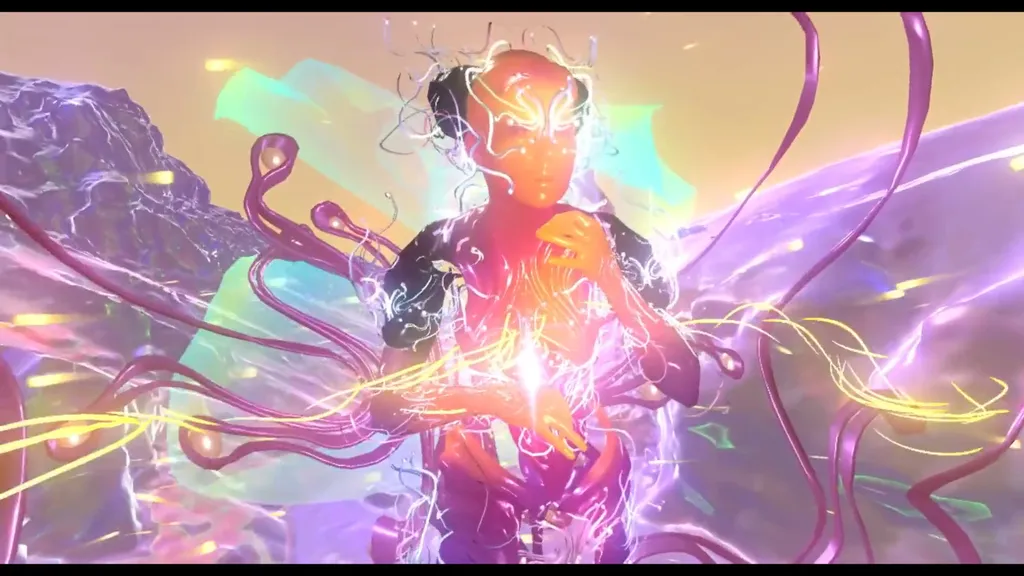Kudos where it’s due; Björk has gone a step further than most artists with VR.
This rerelease of 2015’s Vulnicura isn’t just a single 360 music video or VR experience but an entire album full of them. And it’s not a quick cash grab (if it were it would be incredibly ill-advised); the singer’s multi-year VR journey demonstrates a genuine intrigue for the tech.
Rarely, though, does Vulincura VR measure up to the transcendent beauty of the songs it visualizes. A Björk ‘experience’ is one of relentless production, an aggressive bombardment of rainbow-bright colors, twisted and tamed in sublimely surreal fashion. In more traditional forms, pairing her brand of audio and visual feast often results in faultless in sensory overload. In VR, however, the faults are all too apparent.
Vulnicura opens, for example, with the Hollywood-flavored Stonemilker, presented in modest affair in VR. Björk stands on the shore, giving a transfixing performance to a 360-degree camera. But the video quality is muddy at best and at times the singer stands right in the middle of a camera stitch. Tellingly, it’s a four-year-old video available on YouTube. Trite as it may seem, it’s little quirks like this that place a barrier between the sweeping score and the virtual experience.
Vulnicura VR is better when it fully embraces VR. In Notget a sinister creature stalks the volcanic-black scene you find yourself in. Watching it pulse and jolt to the music is quite hypnotic, bringing darker undertones to the track itself. Family, meanwhile, is a searing centerpiece with arresting, often harrowing visuals and a spectacular lights display. You can’t help but wish the same production efforts had been prescribed to, say, Mouth Mantra, which is another 360 video this time filmed inside a mouth. It’s creepy but the film quality and distortion doesn’t measure up to what could have been a memorable true VR experience.
Truthfully speaking, longtime Björk fans with a deeper connection to Vulnicura itself might find more to mine from this. That said, their past patronage isn’t well rewarded with a $29.99 price tag for an album they likely already own.
This is, then, an earnest attempt at bringing more out of music through VR. But Vulnicura VR is simply an extension of the same types of experiments we’ve seen before in the most literal of ways. Held back by technical blemishes and a sense of safety, it only rarely elicits a more profound reading of its source material. Producing pretty VR visuals for an album is a nice idea, but I suspect the connection between the two mediums runs far deeper than this suggests.






























